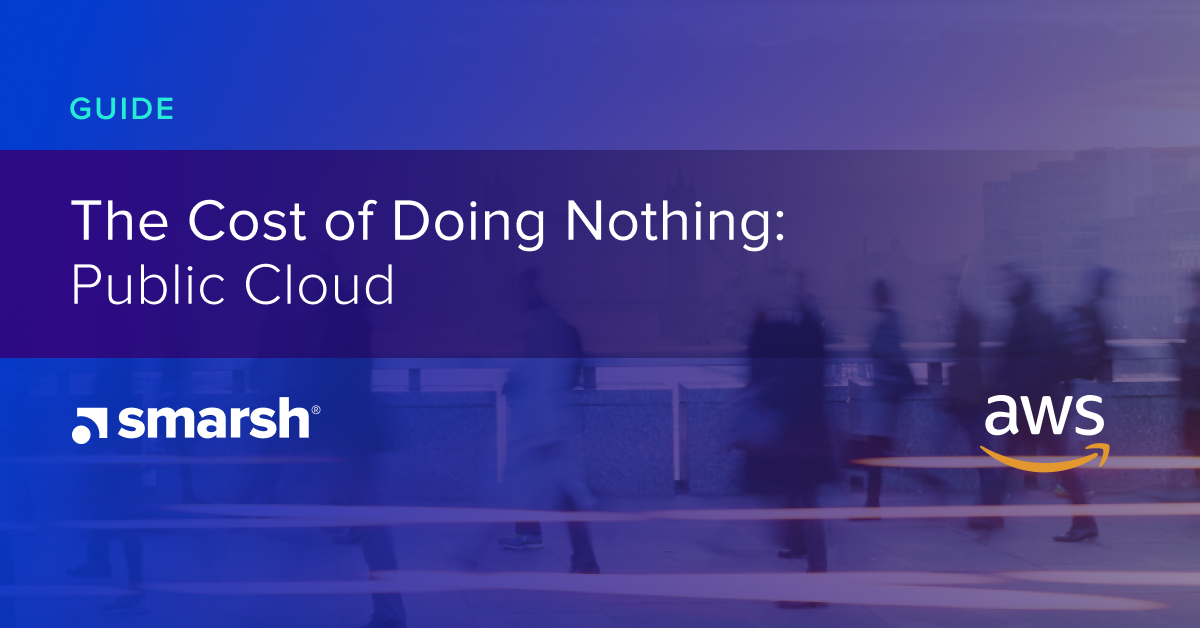The Legal Imperatives for Moving to Public Cloud
While more financial services firms are turning to cloud-based applications for their e-discovery requirements, many still rely on legacy, on-premise systems. In fact, around 70% of financial organizations say their cloud projects are still in the initial "trial and testing" phase.
Historically, this makes sense.
Many corporate legal departments spent the better part of a decade “bringing discovery in-house” to regain control and reduce costs associated with the use of outside litigation service providers. Unfortunately, that in-house push coincided with IT strategies that were pulling in the opposite direction: reducing data center footprints while moving enterprise applications toward the cloud, such as deploying in Microsoft Office365.
Get your free copy of The Cost of Doing Nothing: Public Cloud.

This often produces “good enough” friction, where the chosen cloud-friendly discovery tool is not the one preferred by legal teams. The implications of which may not be realized until experiencing a painful negative outcome in litigation.
Unlike other stakeholders in their firms, legal teams hold a unique position. E-discovery is typically the highest-risk use case. Anything that potentially impacts legal workflows or changes the way discovery practitioners interact with data can elicit a fast “no” or “not yet” in moving that payload to the cloud.
So, what are the most common obstacles in gaining the support from legal teams in moving their data to the cloud?
5 obstacles to change
We have discussed this conundrum with compliance practitioners, strategic partners — including AWS — and within FINRA and SIFMA industry forums. The most common barriers and challenges being expressed include the following.
1. Perception of data security in the cloud
Data security remains a top challenge for discovery decision makers. While this shares many of the same concerns regarding cyber threats and potential data loss, it also underscores the movement of ever-expanding volumes of heterogeneous data, both in managing multi-step e-discovery workflows as well as the larger decommissioning and migration of legacy data sources.
2. Increased complexity of data privacy mandates
Cross-border litigation has always had its share of possession and control challenges. This became even more complex with the striking down of the U.K.-U.S. Privacy Shield and the increase in the number of specific data-protection regulations springing up around the world.
This is now joined by the chorus of U.S. states passing their own privacy regimes, including California, Virginia, Utah, and others likely to follow soon. Managing cross-border discovery with on-premise tools was difficult enough. Identifying, filtering and extracting data stored in potentially multiple cloud storage locations can increase that complexity exponentially.
3. Inadequate/unfamiliar discovery features
Legal document review and other discovery tools are a very mature market category. Moving from a first generation of on-premise tools to legal service program (LSP) datacenter-hosted email review platforms introduced new features and methods of access. This required time to adjust discovery workflows.
Another move to a next-generation of cloud-native discovery applications will create the same uncertainty and feature-set change that comes with the introduction of any new generation of technology. This is even more true for tools that are designed to address the unique nature of today’s collaborative, social and mobile content sources.
4. Discovery tool throughput
Ultimately, discovery teams need to quickly ingest, preserve, review and export large volumes of data to meet non-negotiable deadlines. Any limitations imposed by cloud-based services, such as throttling to limit data volume per task that can be concurrently processed, can have significant costs and contribute to negative outcomes in litigation.
The uncertainty of whether discovery cloud services can function at peak demand levels is difficult to discern via vendor demos and can require proof-of-concept for discovery teams to become comfortable.
5. Economic justification
Discovery economics is often considered as an operational “‘cost of doing business,” and has expense lines spread across multiple departments. Gaining a holistic view on the total cost (measured in hard cost as well as productivity implications) can be difficult to estimate, which in turn makes it hard to attain ROIs from legal teams that support a move to the cloud.
Moving past the challenges
In our recent guide — "The Cost of Doing Nothing: Public Cloud" — we explore these common obstacles further. We discuss why reality runs counter to these arguments, how to move forward, and — most importantly — why maintaining the status quo (i.e., "doing nothing") may be the greatest cost of all.
You’ll also learn why and how cloud-based discovery applications address:
- The ever-growing set of communications and content types (chat, text, social, voice, etc.) that regulated users need to engage with clients
- How to keep up with the increasing volume of communications data by adopting artificial intelligence and machine learning to augment supervision processes
- The legal and privacy needs of global organizations operating across jurisdictions
Share this post!
Smarsh Blog
Our internal subject matter experts and our network of external industry experts are featured with insights into the technology and industry trends that affect your electronic communications compliance initiatives. Sign up to benefit from their deep understanding, tips and best practices regarding how your company can manage compliance risk while unlocking the business value of your communications data.






Subscribe to the Smarsh Blog Digest
Subscribe to receive a monthly digest of articles exploring regulatory updates, news, trends and best practices in electronic communications capture and archiving.
Smarsh handles information you submit to Smarsh in accordance with its Privacy Policy. By clicking "submit", you consent to Smarsh processing your information and storing it in accordance with the Privacy Policy and agree to receive communications from Smarsh and its third-party partners regarding products and services that may be of interest to you. You may withdraw your consent at any time by emailing privacy@smarsh.com.
FOLLOW US